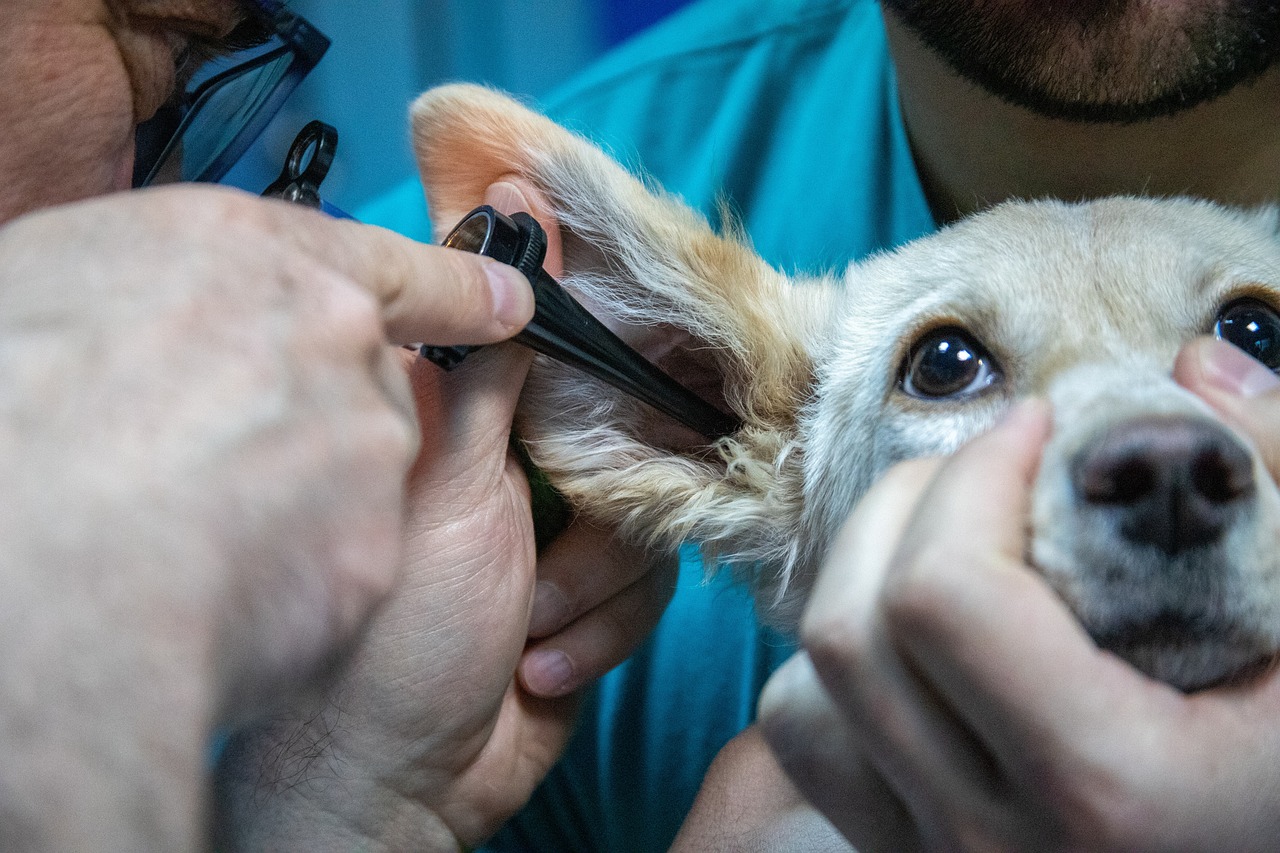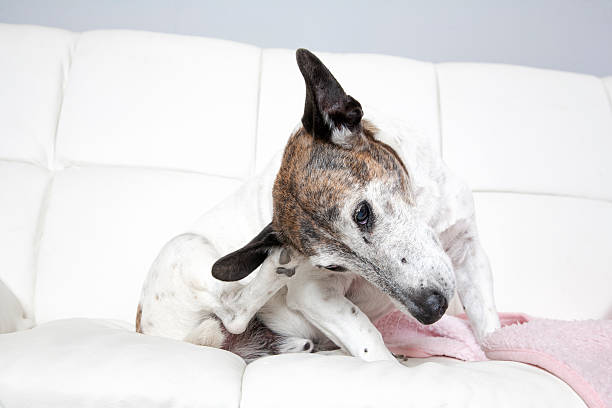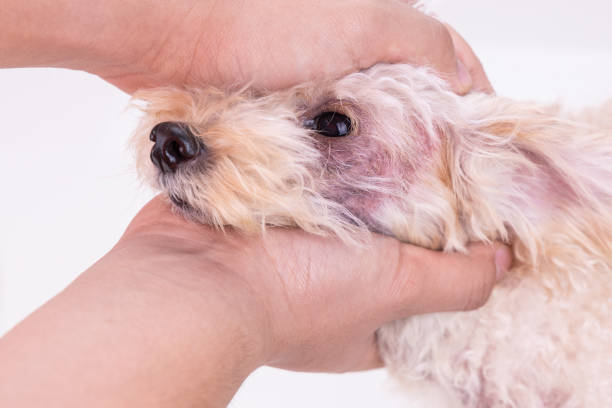Hearing-impaired dogs can enjoy a fruitful and fulfilling life, much like dogs with the ability to hear. However, their upbringing differs from the norm. They are not raised from puppies to socialize with humans and other dogs. They may be raised by humans or other animals, and may have to move a few times before they finally find homes where they will be nurtured and cherished.
Hearing-impaired dogs are often not given the same opportunities to learn and develop as normal dogs. For example, deaf pets do not get the same opportunity to practice their skills in a controlled environment or with other deaf animals.
Dogs who are deaf can be trained to live in a family setting. However, they will need lots of attention and love and may not be as happy being left alone for long periods. When dogs are deaf, they are often not as friendly as normal dogs. They may be more comfortable with one person than in a large group.
The dog’s deafness is usually not the only reason for their lack of socialization. Dogs who are deaf are often not trained to go on walks. They can be trained to walk on a leash. They may benefit from being walked regularly, even if it is just around the block.
Nevertheless, these hearing-impaired dogs can be trained to live with a family and participate in everything that the hearing dog does. Dogs who are deaf can be taught basic commands such as “sit” and “stay”. They can also learn to walk on a leash and enjoy being petted.
Training a Deaf Dog


Training a hearing-impaired dog is like training any other dog, except you’ll need to use hand signals instead of vocal commands. The following are tips on training a hearing-challenged dog.
- Use positive reinforcement.
- Use treats and praise to encourage your dog to come when called.
- Don’t use physical punishment.
- Never hit, kick or pin your dog.
Never Leave Your Dog Alone
Deaf dogs can become bored or lonely if left alone for long periods. Keep them entertained with interactive toys, games, and treats to help keep them stimulated.
Don’t Leave Your Dog Unattended in a Car
Dogs that are deaf can become overheated and dehydrated if they’re left alone in a vehicle on warm days.
Don’t Treat Your Dog Like a Child
Dogs that are deaf don’t understand their owners and may act out in frustration. Be patient and try understanding while they learn new ways to communicate with you.
Teach Your Dog to Speak
You can get your deaf dog’s attention, and they can learn to respond when they hear certain words in a specific tone. You can teach your dog to respond with the following: “sit”, “down”, “stay”, and “come”.
Feeding a Deaf Dog
Dogs with hearing impairment need the same balanced diet as any other dog. Dogs with hearing problems can be fed higher protein, fat, and carbohydrates. Protein helps build strong muscles and keeps the immune system strong. Fat helps keep your dog’s coat shiny and healthy.
Carbohydrates are used for energy in all dogs. Dogs with difficulty hearing can have a variety of dietary needs. In some cases, the diet of a deaf dog may be more or less than the diet recommended for your dog.
How to Feed a Deaf Dog
It would be best to remember a few things when feeding your dog with a hearing impairment. First, make sure your dog can see you when you feed them. Your dog will help them associate the food with you and increase their chances of eating. You may also want to try hand-feeding your dog at first so they can get used to the sensation of eating from your hand.
Another thing to remember is that these dogs are sometimes more sensitive to smells and tastes than regular dogs, so you may want to experiment with different types of food until you find one your dog likes. And finally, always make sure plenty of fresh water is available for your dog to drink.
Exercising a Deaf Dog


Exercise is just as important for deaf dogs as for hearing dogs. A deaf dog needs the same amount of exercise as a hearing dog. Deaf dogs need to be exercised regularly, two to three times a day, and more if your deaf dog is young. Deaf dogs are most often kept as pets. They make good walking companions, especially if trained to lead their owners.
Ideas for Exercising Your Dog Indoors
There are many ways to keep your dog active indoors, especially if one or both ears are deaf. Here are a few ideas:
- Play fetch with a ball or toy.
- Teach your dog to play “hide and seek” by hiding treats or toys around the house and telling them to find them.
- Take your dog for slow walks around the house or yard.
- Have your dog run through an obstacle course made of hula hoops, tunnels, or other household objects.
- Play tug-of-war using a rope or toy.
Socializing a Dog with Hearing Loss
Deaf dogs need just as much socialization as most dogs. A hearing-impaired dog that is not socialized will most likely never be a good hearing dog. This means taking your dog to the dog park, dog obedience classes, getting a dog trainer or other events, and having him meet new people.
Socialization is essential in the deaf dog’s development and should not be avoided. The deaf dog will also benefit greatly from socialization as it will help them understand what they hear and see and how to respond appropriately to both. Deaf dogs should be socialized from a young age as this will help your dog get used to different situations and people.
Introducing Your Dog with Hearing Problems to Other Dogs
When your dog is deaf, it is important to take the time to introduce them to other dogs properly. You should always keep your deaf dog on a leash during interactions with other dogs and be prepared to intervene if things get too rough. It’s also important to ensure the other dog is comfortable around a deaf dog; some dogs may be hesitant or scared of them.
Start by letting the dog’s nose smell other dogs from a distance. If both dogs are okay with it, let them start playing together. However, always watch them and step in if things get too rough. Remember that deaf dogs can’t always hear when another dog gets too excited or playful, so it’s up to you to ensure everyone stays safe and happy.
Helping Your Dog Make Friends
Deaf dogs can easily befriend because they are always happy to see people.


One way to help your deaf dog make friends is by taking them to a park or another public place where many people and dogs are. Most deaf dogs are drawn to other animals, which is a great way to socialize. You can also let your dog meet new friends one-on-one by arranging playdates with other pet owners. Just monitor the interactions closely and make sure everyone is playing nicely!
You may also read: 15 Signs Your Puppy Needs Some “Me Time”
Building a Support System for Your Dog’s Hearing Loss
If you have a dog with congenital deafness or ear infections, you know how challenging it can be to keep them safe and healthy. Some may be born deaf, but some gradually lose their hearing abilities due to old age.
When that happens, it is important to build a support system for your deaf dog; you can make life a lot easier for both of you. Here are some tips on how to do that:
1. Make sure your home is safe for your deaf dog. Install baby gates at the top and bottom of stairs, put up fencing to keep them in the yard, and keep dangerous items like chemicals and electrical cords out of reach.
2. Train your deaf puppies or dogs using positive reinforcement methods like treats or verbal praise. Be consistent with commands and rewards, and always use the same hand signals, visual cues or body language to learn them easily.
3. Find a good obedience class for deaf dogs or ask an experienced trainer to help you with basic commands and manners training.
4. Be patient when training your dog with hearing loss. It may take several weeks to get them trained, and it may take a year or more for them to develop the skills you want.
Caring for a Deaf Dog’s Ears
Deaf dogs are more prone to ear infections down to their inner ear because they can’t hear the telltale signs. Ear mites, yeast, or bacteria get trapped in their hair and can cause an infection that goes unnoticed until it is too late.
Cleaning Your Deaf Dog’s Ears
Dogs with ear infections often have a discharge coming from their ears. This can be brown, yellow, or bloody in colour. If your dog has an ear infection, take them to the veterinarian for treatment.
Deaf dogs can also suffer from ear infections if not kept clean. The best way to clean your deaf dog’s ears is to use a cotton ball and mineral oil. Put a few drops of mineral oil on the cotton ball and gently wipe inside your dog’s ears. Do this once a week to help prevent ear infections.
If you suspect your dog has an ear infection, seek a veterinarian’s advice first for veterinary medicine.



